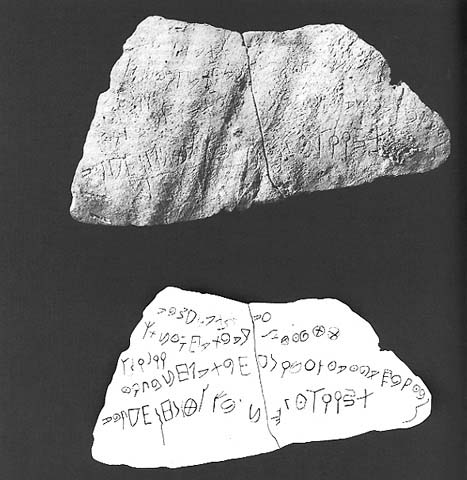Image Details

Moshe Weinberg
The Izbet Sartah sherd containing the longest proto-Canaanite inscription and the oldest Hebrew abecedary ever discovered. The first four lines (counting the short line on the far left as line three) cannot be read as words. They are probably a schoolchild’s exercise. From the shape of the letters, however, we can tell they were written left to right. The fifth line is the Hebrew alphabet, also written left to right (rather than right to left as in modern Hebrew). Proto-Canaanite is the name of the earliest alphabet ever discovered: it was used to write many Semitic languages, including Hebrew. Two letters are missing: mem which should have been where the small line similar to an apostrophe appears, and resh, which seems to have been overlooked. A second qof is written in its place (see third and fourth letters from the right). The kaf, similar to the earliest Greek kappa is the first letter on line two and the 12th letter in the abecedary, reading from left to right.
